

CONNECTIONS ACROSS BOUNDARIES
Editor:
Jennifer Donovan
Design & Illustration: Michael Lewy
Writers: Grace Chua
Katie DePasquale
Jennifer Donovan
Photography credits:
LIDS Student Conference photos by Dawn Colquitt-Anderson. Photos of Gracie Gao, Christina Lee, and the LIDS Commencement Reception by Francisco Jaimes. Photo of Caroline Uhler by Lillie Paquette. Photo of John Tsitsiklis by Donna Coveney.
Massachusetts Institute of Technology Laboratory for Information and Decision Systems
77 Massachusetts Avenue, Room 32-D608
Cambridge, Massachusetts 02139
http://lids.mit.edu/
send questions or comments to lidsmag@mit.edu
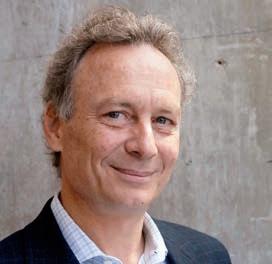
A Message from the Director
It is a privilege to introduce the latest edition of LIDS|All. I began my tenure as LIDS Director in April 2017, and on this occasion I would like to express my gratitude to my immediate predecessors: Asu Ozdaglar (the previous LIDS Director), Pablo Parillo (the previous Associate Director), and Munther Dahleh (the Interim Director, after Asu was appointed to the important role of EECS Associate Department Head, and also the LIDS Director before Asu), as well as the long list of distinguished directors before them who shaped LIDS over the years, including my own advisor, Mike Athans. I am thankful to them, as well as to our outstanding staff, for preserving and enhancing the vibrancy of LIDS on both the intellectual and the operational fronts. Today, LIDS is as strong as ever.
By MIT standards, LIDS is a small lab, yet it is recognized for novel contributions to fundamental problems that lie at the core of many recent advances, from data science to autonomous systems. Our mission is to cultivate this intellectual “sweet spot,” by combining world-class methodological research with notable real-world impact. Our world-class research continues to attract tremendous talent, such as Philippe Rigollet, who joined LIDS as a principal investigator this year. I would like to take this opportunity to welcome Philippe, who you can read more about in this issue.
Eytan Modiano, who I am thrilled to announce has accepted the role of LIDS Associate Director, and I, look forward to contributing to the mission and success of the lab. Some of our more
ABOUT LIDS
The Laboratory for Information and Decision Systems (LIDS) at MIT, established in 1940 as the Servomechanisms Laboratory, currently focuses on four main research areas: communication and networks, control and system theory, optimization, and statistical signal processing. These areas range from basic theoretical studies to a wide array of applications in the communication, computer, control, electronics, and aerospace industries.
immediate goals are to carry out a comprehensive review and strategic planning exercise for the lab, to bring in more new faculty and staff, and to continue strengthening and highlighting our research presence in our core disciplines and their applications. In addition, by taking advantage of interactions and initiatives enabled by being part of the Institute for Data, Systems, and Society (IDSS), we expect the reach and the impact of the lab’s activities to only become broader.
Ultimately, LIDS is a community of people who share a common outlook. Nothing makes us more proud than seeing our graduates succeed, be it in industry or academia, as showcased by David Tse, the 2017 recipient of the prestigious Shannon Award, and whose interview is featured in this issue. You will also find interviews with graduate students Ian Schneider and Christina Lee, whose work in renewable energy and network science, respectively, represents the combination of fundamental research and challenging applications that is the hallmark of LIDS. In addition, you will read about one of our newest staff members, Jin Gao; the impressive work in artificial intelligence being carried out by Principal Research Scientist Kalyan Veeramachaneni and his group; and Prof. Caroline Uhler’s wide-reaching research on graphical models.
I hope that you will enjoy reading this issue, and getting a glimpse of the activities and the people that make LIDS the exceptional place it is today.
Sincerely,

John N. Tsitsiklis, Director Clarence J. Lebel Professor of Electrical Engineering
LIDS is truly an interdisciplinary lab, home to about 125 graduate students and post-doctoral associates from many departments and centers across MIT. The intellectual culture at LIDS encourages students, postdocs, and faculty to both develop the conceptual structures of the above system areas and apply these structures to important engineering problems.

PRACTICAL LESSONS
By Grace Chua
Ask David Tse what his greatest failure is, and he gives a surprising answer: his PhD thesis.
Now, David is no slouch. The LIDS alumnus and Stanford University professor holds several patents, has coauthored a seminal textbook, and received the 2017 Claude E. Shannon Award from the Institute of Electrical and Electronics Engineers (IEEE) Information Theory Society—information theory’s highest honor, given for ‘consistent and profound contributions’ to the field.
But in 1994, his PhD research under Professors John Tsitsiklis and Robert Gallager (who received the Shannon Award himself in 1983)
However, David, along with many others at the time, had the model backwards. It wasn’t the network that had to allocate resources intelligently (a hugely complicated endeavor when dealing with intermittent bursts of data). Rather, the receiving ends had to intelligently accommodate to the congestion in the network. Today, the internet has been designed and grown based on this approach.
“It turned out to have minimal impact on how the internet was designed,” David says of his work. The experience came with a practical lesson, however. David learned that addressing new challenges sometimes requires completely new perspectives and ways of thinking. “If you
“Being an engineer, I feel the urge to solve problems elegantly on one hand, but also convert that elegant solution to something in practice.”
was veering off in entirely the wrong direction. David’s work was focused on ways to design the rapidly-growing internet to be efficient and reliable, given the ‘bursty’ nature of the transmissions: how might the network cope with data being transmitted in the fits and starts that were so different from the constant bitrate of telephone conversations? The approach he took was based on telephone network design, focused on making the network as intelligent as possible to accommodate the complex traffic demands.
try to build a new thing, people often think, ‘Ok, I’ve built this [other thing] before, can we use the same idea to adapt it to the new thing?’ Often, it doesn’t work.”
That’s when he realized he wanted his work to have a wider reach. “After graduation, I stopped doing this work [on intermittent data transmission] very quickly. The math was interesting, but the impact was limited,” he says. “Being an engineer, I feel the urge to solve problems elegantly on one hand, but also
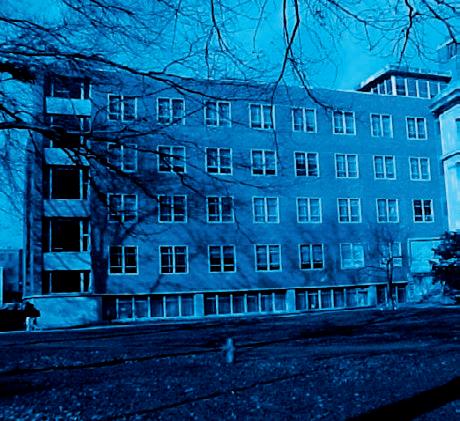
convert that elegant solution to something in practice.” To do this, he turned to studying how wireless channels can be used most efficiently, as their capacity is much more limited than that of a network built on wires.
David, who is originally from Hong Kong, first arrived at MIT in 1989 after finishing his undergraduate years at the University of Waterloo in Canada. It left an impression. At that time LIDS was housed in MIT’s Building 35. “[The building] looked like a mental institution—seemingly a pretty grim place to spend five years. But the intellectual environment turned out to be amazing.” That environment included the open, friendly atmosphere still tangible at LIDS today. Since much of the work done at LIDS is theoretical, David says, “Most of us were not in the ‘lab.’ Rather, we spent time together talking and
brainstorming.” Meanwhile, professors gave their time generously to students who had questions or wanted to talk over a problem.
Today, the young academic who wanted to make a broader impact has left his mark. David’s work is now used in all modern cellular wireless standards. In 2004 he coauthored a textbook, Fundamentals of Wireless Communication, which has guided generations of engineers and researchers. The textbook covers the theoretical and practical aspects of wireless communications—another reflection of his LIDS background.
Currently, his work is centered on information theory and its applications, including computational biology and machine learning. And, after nearly two decades on Berkeley’s Electrical Engineering and Computer Sciences faculty, in 2014 he moved a few miles south to Stanford’s Department of Electrical Engineering in in search of more interdisciplinary projects.
On Stanford’s campus, the electrical engineering department is across the street from the medical school. This means that by crossing the street, David can pop in to see collaborators there and discuss their latest projects, which range from finding more efficient ways to sequence genomes, to teasing out meaning from genome-wide association studies, to identifying correlations between genes and physical traits.
MIT’s Building 35, home to LIDS when David Tse was a student.
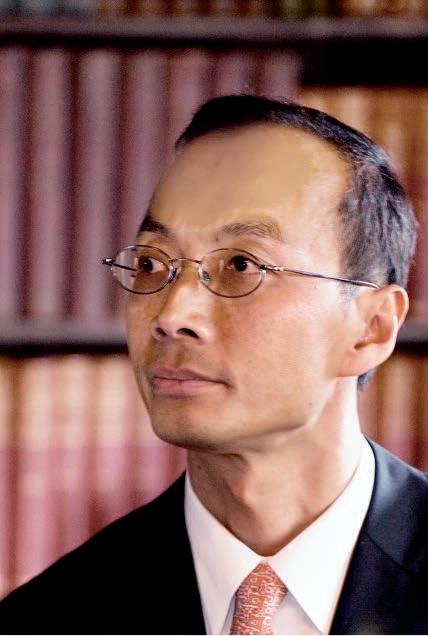
In some ways, the combination of data science and genetics is a match made in heaven. The human genome is a sequence of billions of nucleotides, represented as letters from an alphabet of A,G,C,T. Beyond this basic genetic information, other molecules exert an influence on how physical traits manifest, by boosting or suppressing the machinery that reads our genes. And there’s meaningful variation in genetic data from population to population,
individual to individual, and even within the same individual over time.
Today, there’s more of this genetic data available than ever before, as the cost of sequencing has dropped dramatically over the years. But making sense of it is akin to finding a needle in a haystack: while sequencing yields huge amounts of data, it’s a challenge to find and identify the right signals. Here’s where information theory plays a role, David says. “Can we develop interesting methods to find patterns and features that you can use to detect a particular disease, for instance?” The approach is potentially powerful. It makes it possible, for example, to track changes in a single individual over time—bringing our capabilities one step closer to personalized medicine.
Between all this research, spending time with his wife and five-year-old daughter, and delivering the Shannon Lecture at the IEEE International Symposium on Information Theory in Germany in June, David had a busy summer. Still, he makes as much time for his students as he can—his way of paying it forward after LIDS professors gave their time to him so generously. And the LIDS approach to thinking about problems has stayed with him all these years. “The specific project I worked on while at LIDS may have made little impact in the wider world, but the education and the skills in thinking about problems have been very valuable,” he says. It’s another thing he tries to pass on.

DISCOVERING INSIGHTS IN DATA
BUILDING SIMPLE, ELEGANT SOLUTIONS WITH STATISTICAL ALGORITHMS
By Katie DePasquale
Most people don’t give much thought to the ways in which an e-commerce platform like Amazon generates its recommendations for users. Christina Lee considers this topic often, however. As part of her research into statistical algorithms, she thinks about how to design them to make the best use of the social data these platforms gather. Amazon, as well as other platforms like Etsy and eBay, use the humangenerated data they collect (from each user’s browsing and purchasing decisions) to encourage those users to view and buy other items. Christina looks at the scalable statistical algorithms behind all of this.
It was during her undergraduate work in computer science at the California Institute of Technology that Christina first became interested in research. “My mentor in undergrad was Adam Wierman, and he was a very energetic and motivating professor. Everything he talked about sounded really exciting, and he taught a course about network science, which includes modeling how networks grow and form, what properties arise from different models, and how they affect interactions over a network.” When she graduated in 2011 and it was time to choose a graduate program, she came to MIT for a PhD in Electrical Engineering and Computer Science. She sought out LIDS specifically for its interdisciplinary approach to research. “I felt like it was a very unique lab that had both rigorous theory and a lot of interesting applications,” she says. “I
definitely came to work with my current advisors, Asu Ozdaglar and Devavrat Shah, as well. They both work on research related to networks but with very different approaches and perspectives, which is really unique.”
Christina’s recent research has centered around collaborative filtering, which is basically a way for a system to make automatic predictions about its users’ interests. It does this by gathering and comparing the interests of as many of its users as possible in order to find other similar users. “It’s a really simple, intuitive idea,” says Christina. “This idea of collaborative filtering has been used already in many applications, where you discover similarities between users or between products, and these similarities allow you to then aggregate the information to better predict what the user’s preference might be. But although they’ve been used a lot in the past, there hasn’t been much theoretical foundation to explain why this seems to perform well in practice.” This is where her research comes in. Her goal is twofold: to find the theory behind why this method would work for a general model of the data, and to find the necessary assumptions for the data to prove that it works. After that, it’s possible to improve upon the algorithm using the underpinning of theory rather than guesswork.
The other crucial aspect to the recommendations made by e-commerce systems is density of data. If the data is too scarce, it’s difficult to
use it to make any reasonably accurate comparisons. However, Christina says, “We have been able to design new algorithms that are able to handle sparser data sets. The intuitive idea there is that if a pair of users do not have any commonly rated products, you would look at not only first order information but also higher order information associated with the users. For instance, not just the products the pair of users directly rated, but also the set of users who subsequently rated those products and the set of products that this larger set of users rated. So you would look at information that was associated with a user indirectly through a path in the data.” Building these data paths allows for ferreting out similarities even when there are few or no shared ratings. This is especially useful for a platform such as eBay or Etsy, in which purchases tend to be more individualized because each item is sold to a limited number of users, making links between users harder to find.
The latest project at the forefront of Christina’s mind is a little bit different. She’s exploring the interplay between the machine learning and statistical algorithms used to generate recommendations, and a human behavioral model that tries to account for how people make decisions and react to recommendations. “Consider a user who visits the system in search of a product,” she says. “The system makes a recommendation that might come alongside some information such as previous ratings for
this product and historical information about other users’ actions. The user will react to this information and make a decision: should I buy it or not, and if I buy it how do I rate it? Through these decisions, information is sent back into the system. This data is then collected and used by the system to predict user preferences and make future recommendations.” One could imagine a worst-case scenario where these feedback loops in the data flow cause product ratings to be either positively or negatively overhyped. Ideally, a recommendation system should be designed in such a way to incorporate the human decision factor in how it analyzes the data it receives—to make it easier for users to find products that match their preferences, and learn the product qualities as accurately as possible. This is not a simple thing to do in practice, of course, because human behavior is hard to model.
In the future, Christina hopes to explore other applications for this type of collaborative filtering, such as those in the healthcare industry. She’s already considered the possibilities related to projects like predicting protein or gene interactions: “You can run experiments to test the interactions of proteins, but it might be really expensive to test every single pair of proteins. So they will often select a small set of experiments to run. Given that you have incomplete information about this network, the question becomes, can I use this incomplete information to predict interactions between untested pairs
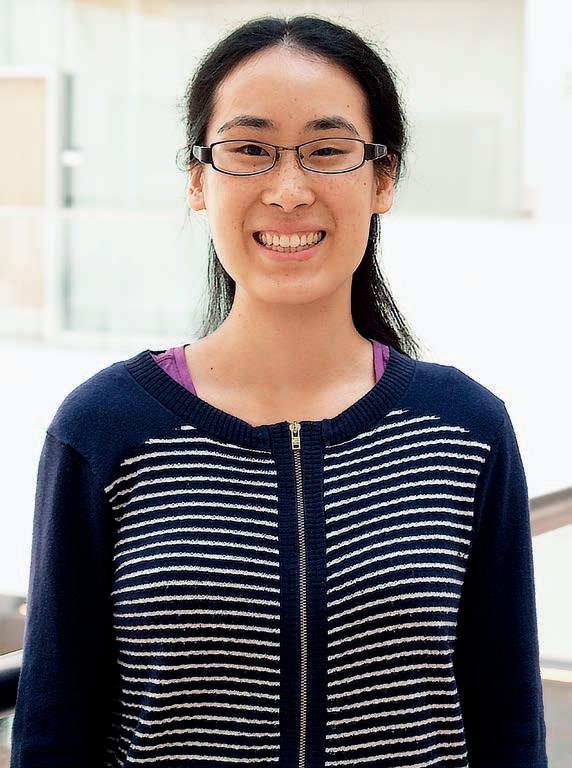
of proteins? What’s the next experiment I should do that will hopefully be more useful?” Data sparsity is frequently an issue in this application, so it’s not difficult to see how her research could play a role in addressing that. But she’s interested in a variety of different paths after LIDS, from healthcare to incorporating human behavior and game theory in understanding recommendation systems, to continuing her
current work on understanding statistical algorithms for general models.
Christina says the intellectual foundation she’s built in her time at LIDS has been as fundamental to her work as the support and assistance she’s received from advisors, staff, and other students there. “It’s not just about getting an algorithm to work for a particular data set and getting cool plots or charts. We really want to understand, why is this working, and what are the things that would break it?” she says. “At the same time, with my advisors, even though we care a lot about theory, they’re still always asking the question of what is the impact and why do we care about this? We’re not only designing algorithms that we can analyze and get nice theory results, but are also always asking: Is this algorithm practical in terms of implementation, is it scalable to our data sets? I really appreciate that aspect, looking for simple, elegant solutions that we are able to explain clearly.” The open, welcoming community she has found among the other female students in particular, as well as the unwavering support and encouragement of her advisors, has helped her feel at home and inspired.
When she’s not busy in the lab, Christina takes part in activities with her church and loves cooking and sharing meals with friends. Even in the realm of food, her passion for discovery stands out. “I like grocery shopping,” she says with a laugh. “You can think about the possibilities.”
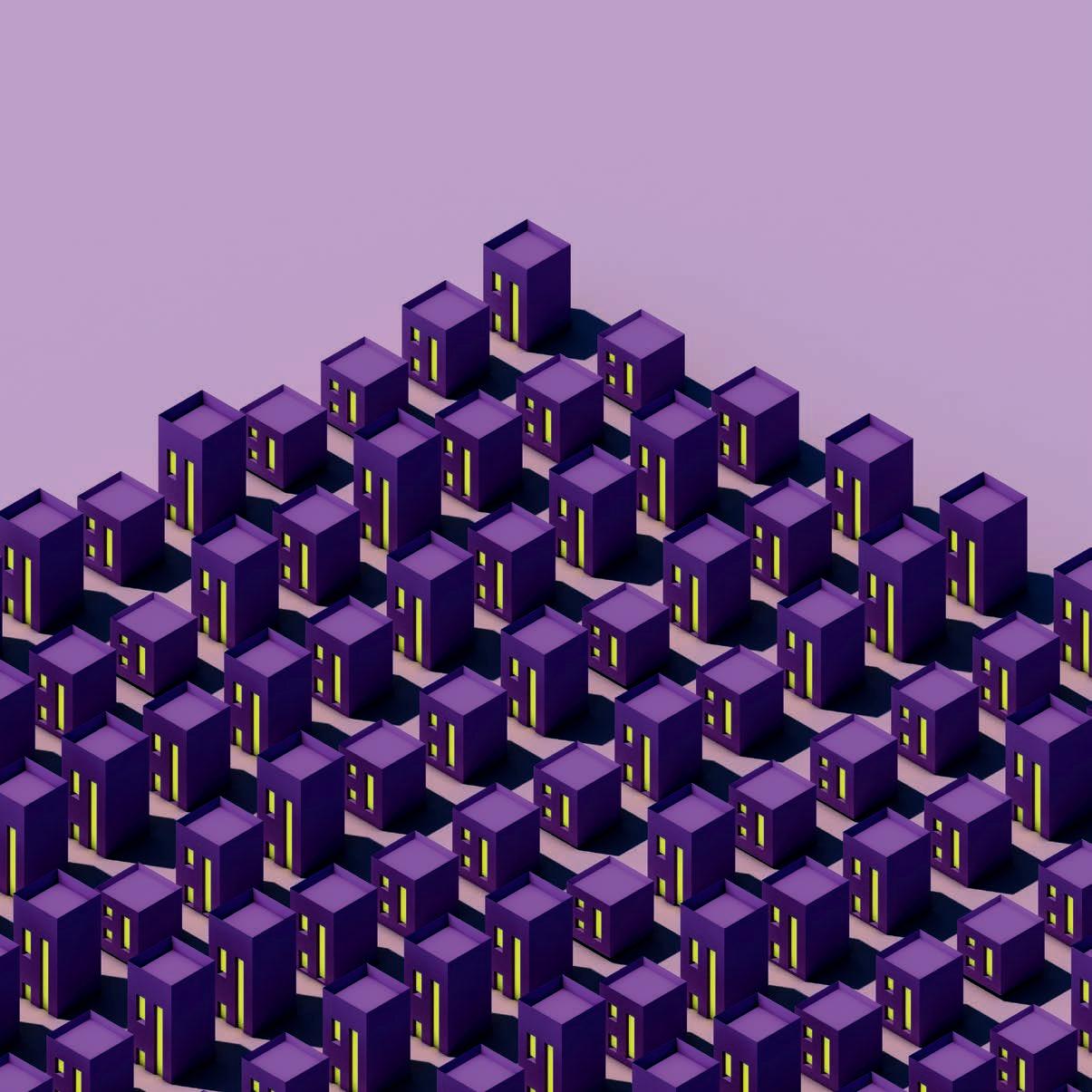
ENGINEERING A BRIGHTER FUTURE
By Katie DePasquale and Jennifer Donovan
Ian Schneider has spent much of his academic career thinking about renewable energy and where it sits in the larger picture of social and financial infrastructures. His interest began during his undergraduate days at Dartmouth College, where he studied engineering and found himself digging into the question of how to make renewable energy viable—not just from an engineering perspective, but also from an economic one.
The variability in clean energy supplies, which frequently come from unpredictable sources like the wind and sun, makes them particularly tricky to plug into traditional pricing and distribution models. However, understanding that the power grid is impacted as much by the workings of financial markets as it is by functions of energy supply, Ian began exploring research questions about the interaction between the two. These kinds of questions, with strong engineering and economic components, drew him to LIDS for his graduate work in the fall of 2014. This also made him a natural fit, two years later, for the new PhD program in Social and Engineering Systems (SES) offered by MIT’s Institute for Data, Systems, and Society (IDSS). Ian was one of just 17 candidates admitted to the inaugural class of the SES program, which began in the fall of 2016.
To understand Ian’s current research, it’s important to first know a bit about how energy is traded. Typically, the electricity sent to our homes on a day-to-day basis is treated as a
commodity: bought and sold in wholesale energy markets, then resold to consumers at retail prices. However, the wholesale market model is not designed with grid stability in mind. In the energy market, unpredictable gaps between supply and demand are problematic, leading to unsteady power provision. To avoid this, grid operators have begun to use markets that trade in future energy availability, called capacity markets. In these markets a bid and auction system is used to compensate suppliers in the present for energy they commit to providing in the future. The aim is to ensure, by incentivizing investment in facilities and equipment well in advance of needing it, that the power supplied to the grid will always meet the demand. This kind of stability is important for maintaining reliable infrastructure, and becomes especially important during peak demand periods, when an overloaded grid could fail and, in the worst case, create a ripple effect of power outages throughout a region.
Conventional capacity markets, which are designed to accommodate the steady power supplies that come from traditional sources, such as coal, natural gas, or other fossil fuels, require a great deal of reliable prediction to work well— an approach that falters when renewable energy is added to the mix. Ian explains: “Suppliers of wind and solar power have an uncertain source of energy—which means the amount of energy they produce varies at any given time. Some might say this means they have no capacity value: since you can’t trust
the electricity to be available at any given time, the supplier shouldn’t be able to earn money in a capacity market. Others might disagree, arguing that the supplier’s bid can sufficiently account for the likelihood that it will operate at certain hours, as well as the costs if there isn’t any wind or solar energy available.” The solution to this prediction problem lies in how the market is structured. This is where Ian’s research comes into play.
“People at LIDS really understand the mathematical foundations of optimization and statistics, and there’s support and knowledge here for using these tools to tackle big societal problems.”
Ian’s work focuses on market design and optimization. Using tools from game theory, economics, and probability, he examines and develops market mechanisms that account for underlying uncertainties in energy availability. This helps him to develop a nuanced and realistic understanding of the ways changes in the market’s design—the rules by which it operates—influence the behaviors of its participants, and to get a sense of the features most critical to their choices. The hope is to build efficiency into the system: In a market that can manage uncertainty well, both traditional and renewable generators become
better bidders, neither overpromising nor underestimating what they can give to the grid operators, and at what price. This in turn makes it easier for the operators to figure out whether it’s worth it to accept a bidder’s offer, ultimately moving the market toward selfregulation.
While Ian’s overarching goal is to make it easier for electricity markets to accommodate the uncertainty of renewable energy, he also hopes that market improvements can open up space for innovation that will further ease the integration of renewable resources. For instance, improvements to market design could encourage innovative companies to harness demand flexibility, a means of incentivizing consumers to shift their energy use to periods when electricity is less expensive, or more renewable energy is available.
The aim, ultimately, is for his work to inform the policy makers and regulators who drive the grid’s mechanics. “It would be amazing if we could give step-by-step guidelines about how the market should be run,” he says. “But the more likely outcome is that we explain the key drivers of value and risk in this market. If we use the underlying mathematical features, and assume that both buyers and sellers are trying to make as much money as they can, we can help identify the features that will give us the greatest understanding of how market design impacts grid efficiency and reliability.”
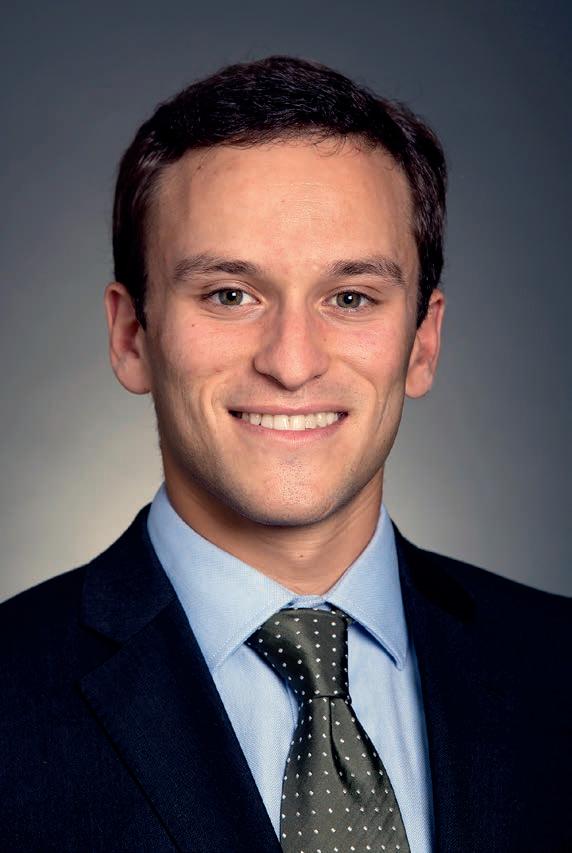
For Ian, who is supervised by Professor Munther Dahleh and Principal Research Scientist Mardavij Roozbehani, LIDS is the perfect place to study these questions—not least because of the diversity of research happening at the lab. “We have the same sort of tools and language for how we do things, but we’re working on extremely different problems,” he says. This makes it an exciting place to work, and a great place to learn. “People at LIDS really understand the mathematical foundations of optimization and statistics, and there’s support and knowledge here for using these tools to tackle big societal problems.” It is these big problems that will keep Ian working for years to come, engineering a cleaner, brighter future.

Data to AI
By Jennifer Donovan
Principal research scientist Kalyan Veeramachaneni has been working in data science for over a decade. Although his areas of research— machine learning and artificial intelligence (AI)—are at the forefront of a new wave of interest in the field, his work remains driven by a fundamental question: how to improve the mechanics of data science. Previously a research scientist at MIT’s Computer Science and Artificial Intelligence Laboratory (CSAIL), Kalyan joined LIDS in 2016—one of several new ventures for him in recent years, including co-founding two startups, PatternEx and Feature Labs, and establishing his research group, the Data to AI Lab. The research group’s work focuses on developing automation technologies that help data scientists parse the massive amounts of information produced by contemporary systems.
The lab’s current threads of research center specifically on improving the process of predictive modeling, or AI. A type of machine-learning model, prediction models are algorithms that use the patterns detected in existing data to derive, from new data, the likelihood of a specific outcome. This outcome can be defined as almost anything, so long as the dataset can be somehow used to predict it—the next show someone is likely to binge-watch on Netflix, for instance, or the location of a protein-coding region of DNA. The general process for building a predictive model (much simplified here) involves (1) problem selection: defining what the user would like to predict from their data (2) feature engineering: processing raw data
into a set of features, or variables, useful for making this prediction, and (3) machine learning: transforming the feature set into a predictive model. Each of these steps encompasses a range of complex, sometimes iterative, and sometimes human-driven sub steps, all of which affect the functioning of the whole.
So, where does a data scientist begin when they are asked to build a predictive model? And what are the biggest bottlenecks they run into? Kalyan and his team set out to answer these questions by first taking the time to observe data scientists in action: “One of the things I realized in 2013 or 2014 was the numerous challenges that people face when they have actual real data, in terms of processing and deriving insights,” says Kalyan, “And the only way for me to learn it firsthand was to actually try to solve a lot of problems.” So for three or four years he worked on projects with data scientists in a range of industries, from healthcare to banking. This gave him a clear understanding of how predictive modeling was working (or not working) in the real world, and where automations would be most useful.
One critical discovery was that the process of feature engineering, which takes up the majority of a data scientist’s time, could be automated. Feature engineering happens in two steps. The first step is called feature ideation. Here, a data scientist identifies the features, or variables, in their data that are most useful for solving the prediction problem. The second step is called feature extraction. This refers to
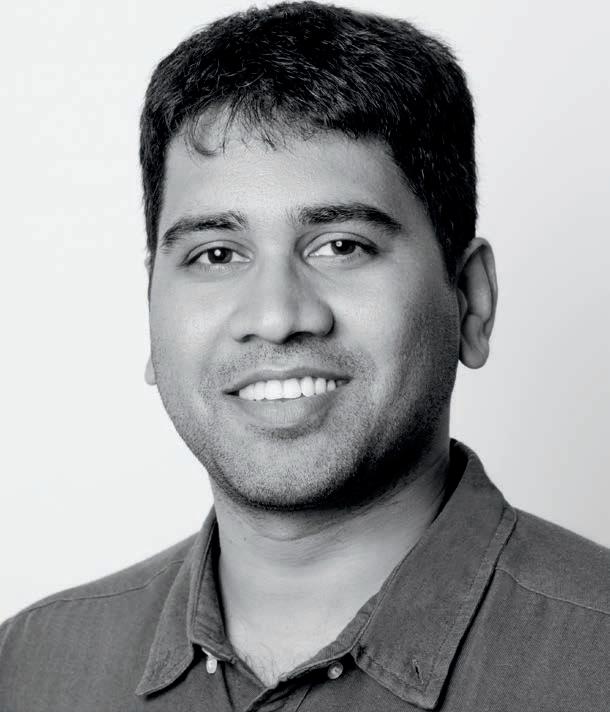
the series of operations a data scientist runs on their raw data in order to organize it by the selected features, and to then convert those features into a form that is ready for machine learning. To give an example, if a retailer is trying to figure out how to time a sale for maximum revenue, knowing whether more shoppers come to their store on weekdays or weekends would be of value. From this, the data scientist can identify ‘day of the week’ as a useful feature for prediction. If their database
only contains specific time stamps, though, they would need to extract the feature, converting those timestamps to something more general, such as days of the week, in order to recognize a pattern. (In other words, for predictive purposes, knowing how many customers tend to shop at the store on Tuesdays is of much more use than knowing how many customers shopped there on August 17, 2015.)
Over the past two years, Kalyan has had major breakthroughs in automating the entire feature engineering process. The vital insight was recognizing that, although the disciplines and problem types are disparate, there are many operations common to all feature-engineering computations. Critically, Kalyan also found that he could abstract and generalize these operations. This gave the team what they needed to design feature-engineering algorithms that are both general enough and flexible enough to successfully analyze data across a range of problem types. Kalyan and his team then put this all together, creating an end-to-end system called the Data Science Machine (DSM). The DSM can automatically transform raw data into a predictive model, collapsing the building process down from months to hours. It does this using the group’s feature engineering algorithms, followed by a machine-learning algorithm (the last step of the predictive modeling process). For good measure, the DSM also includes an algorithm that tweaks the model’s parameters after each use, optimizing its predictive value over time. And all of this is done without the need for a data scientist’s involvement.
More recently, Kalyan has tackled the prerequisite for feature engineering: selecting the prediction problem. Shaped by the intrinsic challenges of working with raw data, it is a problematic process that is typically noisy and iterative, and can take months of collaboration between domain experts and data scientists to complete. Kalyan and his team, however, have found a way to flip the script, engineering a new approach that allows the data, in a sense, to speak for itself. As with feature engineering, the ability to formalize and abstract commonalities across domains is the cornerstone of the innovation. In this case, Kalyan developed a programming language called Trane to standardize problem expression. Then, using a series of algorithms they designed to run in this common language, the team has been able to generate a complete list of the prediction questions a given set of data is able to answer—increasing what can be done with a data set by a thousand-fold.
A parallel focus of Kalyan’s research is humandata interactions. Here, he and his team develop AI technologies for everyday users. “One of the challenges that I’m after is: How can we enable people to build predictive models for themselves, from their own data, without the need of a lot of expertise?” he says. “That’s the question that keeps me up in the night.” The group’s first foray provides people with the building blocks for an image-recognition app, a system they call, “Build your own Deep Learner.” The idea is that the app will be simple to make—requiring just a few clear steps—
and will be an easy starting point for people to do more with their data, both individually, and as part of a larger network. “A classic example would be identifying bird species,” Kalyan explains. “For instance, a novice birdwatcher who encounters a bird they don’t yet recognize can create an app and connect it to an on-line marketplace. Then the birdwatchers—the people who can actually identify the species— can download this app, take and tag a picture, and upload it to the cloud. An automated algorithm trains and tunes a deep learning model on the cloud, and anyone who is interested can download the model. It makes a sort of community around it, and we’re building that community with AI.”
LIDS has proven to be the right place for Kalyan to explore this research interest and many more, giving him the time and space to develop new ideas. “One of my favorite things about LIDS is the community. It has very highly intellectual people, very driven, and yet at the same time, they are very warm,” he says. “I’m very appreciative of that.” And as he thinks about future research directions in machine learning, Kalyan says he sees the next phase having a more human-focused approach: “The decisions, actions, or predictions made by the systems we engineer are going to be received by a human or impact a human in ways they have not before. So we need to think about how we build these systems, and how we assess their impact given this human factor. I think LIDS is an ideal community for that kind of work.” And it’s a place he’s happy to be.
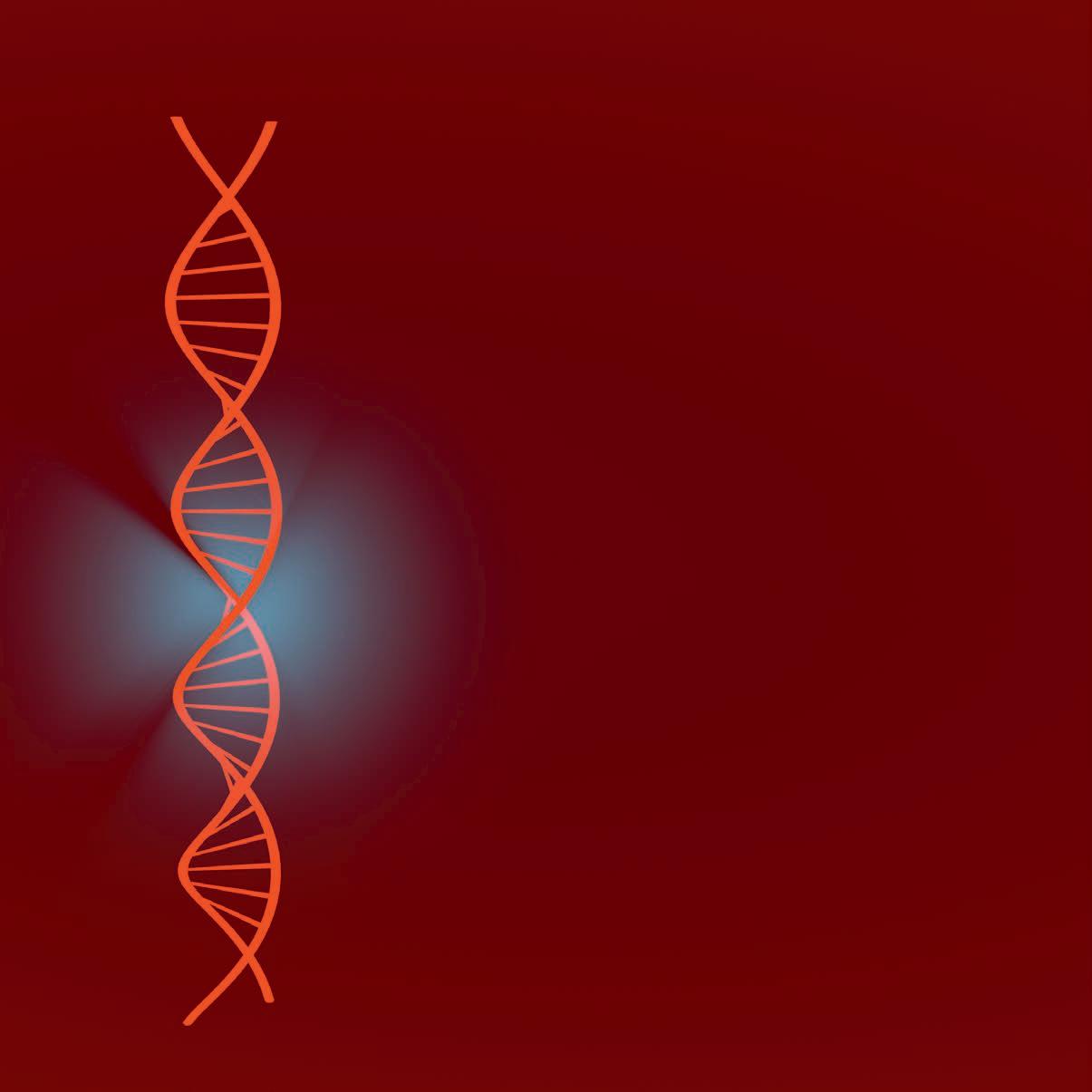
THE EXPLORER
By Grace Chua
Imagine a cell. A liver cell or a lung cell, say: a little porous packet of fluid with a tightly packed nucleus, like a baseball’s rubber core. Within that nucleus are strands of DNA instructions for life, scrunched together like a balledup pearl necklace into little ellipsoidal shaped chromosomes.
How DNA is physically arranged in a nucleus— or packed—depends on the cell it is in. Because, as it turns out, nucleus shape varies with cell type, suggesting that the ellipsoids are packed in different ways in different cells. When cells are strained or compressed, however, their nuclei are too. DNA strands get rearranged as a result, changing how they are packed in the nucleus. In turn, those variations in packing put different combinations of genes in proximity to each other, thereby impacting gene expression—even affecting how cancer cells invade and proliferate.
Now, typical human cells have 23 pairs of chromosomes, tens of thousands of genes, and roughly 3.2 billion letters’ worth of DNA. How many different ways might mechanical forces affect gene expression when the packing configuration of genetic material shifts?
Exploring questions like these is part of Caroline Uhler’s job. Caroline, who is Swiss, joined LIDS in 2015 and is an assistant professor in the Department of Electrical Engineering and Computer Science. Her interest in how gene regulation is affected by chromosome packing
is one aspect of her broader interest in graphical models and directed networks.
Gene regulation is an example of a directed network, Caroline explains. In a gene regulatory network, the nodes are the genes, and the edges are the interactions between them, as genes are transcribed to produce proteins that can then up-regulate or down-regulate other genes. Teasing out the structure of the network helps us understand it better.
“When you have thousands of variables, the only way of understanding their relationships is to estimate a network which tells you which nodes are interacting with each other, and that gives you some insight into the complex phenomenon and what is really behind it,” she says.
As for the packed-together chromosomes? Caroline models the spatial organization of chromosomes within the nucleus using ellipsoid packing models and predicts how gene regulatory networks change.
Genomics, she notes, is an ideal testing ground for new methods of causal inference for learning directed networks. “I can develop new methodology and make a prediction, and in collaboration with biologists, actually validate the method through interventions such as CRISPR.” The gene-editing method CRISPR is able to pinpoint and make changes to individual genes, allowing researchers to study the impact of a single change at a time.
Caroline also works on other types of graphical models—an analytical tool that can be applied just about everywhere. For instance, in weather forecasting you need to know how the weather in one place is correlated with the weather in a different place. You can represent that by a network, too.
She sketches a map of California, harking back to her PhD days at UC Berkeley. “The weather in one city”—San Francisco, say—“is similar to the weather in another nearby city.” Her pen trails south to San Jose, and then east, over the Sierra Nevadas. “But the weather on one side of the mountains could be different from the weather on the other side.”
Estimating and understanding these networks makes for more accurate weather forecasting, which has practical applications that include mapping out where solar or wind energy are strongest, and where they might be tapped. Caroline currently holds a Doherty Professorship in Ocean Utilization, a two-year grant, which funds a project using data from Austria’s meteorological service. “It’s been fun to get access to the kind of data they have, and try to improve the weather forecast for a particular region,” she says.
Caroline’s focus has evolved since her school days, when she was trying to figure out how to combine her interests. “I always loved mathematics. I really liked abstract thinking and I
liked science in general, but I was actually also considering studying Latin,” she reveals. “What I loved about Latin was exactly what I loved about math—it’s like a puzzle where you’re trying to figure out how to put together words to build meaning.”
Casting about for potential career ideas, she taught for a year between high school and university, and thought she might eventually be a schoolteacher. At the University of Zurich, she studied mathematics and biology, with a particular interest in how statistics tied both fields together. Then, she attended a talk by a visiting professor on Algebraic Statistics in Computational Biology.
“That was everything I loved in one title,” she laughs. The speaker, Bernd Sturmfels, eventually became her PhD advisor.
Those varied interests also brought Caroline to LIDS and IDSS (the Institute for Data, Systems and Society), which she feels has a very open, inclusive, and collaborative environment to pursue interdisciplinary work with a solid mathematical foundation.
While Caroline may be settled in at LIDS, she is a seasoned globetrotter. She’s lived in seven countries, including Iran, Greece, and Saudi Arabia as a child, as her family followed her father’s job with Swissair, and has volunteered in Thailand for half a year. She also has ad-
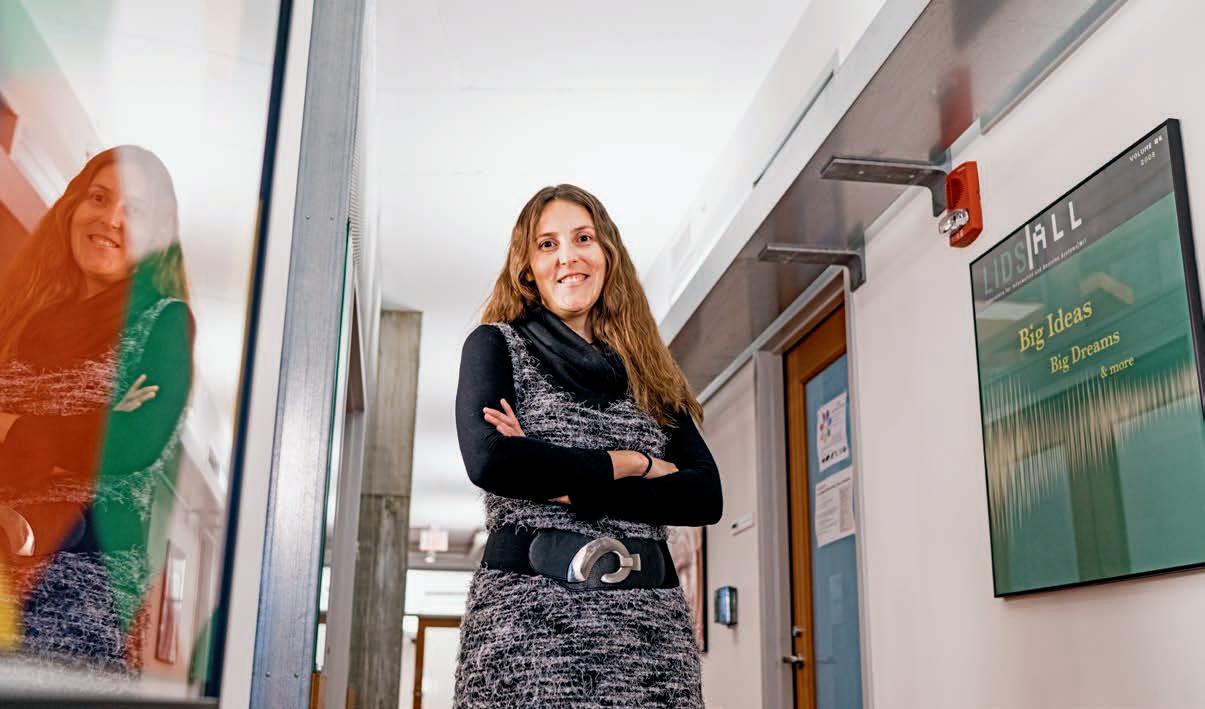
venturous taste buds and adventurous hobbies, like hiking, kayaking, and generally exploring the outdoors.
Today, at LIDS and IDSS, she hopes to further her work on graphical models, and expand the universe of their applications. It’s a fitting task for an up-and-coming scholar with a love of adventure.
Sound Bites: Jin “Gracie” Gao
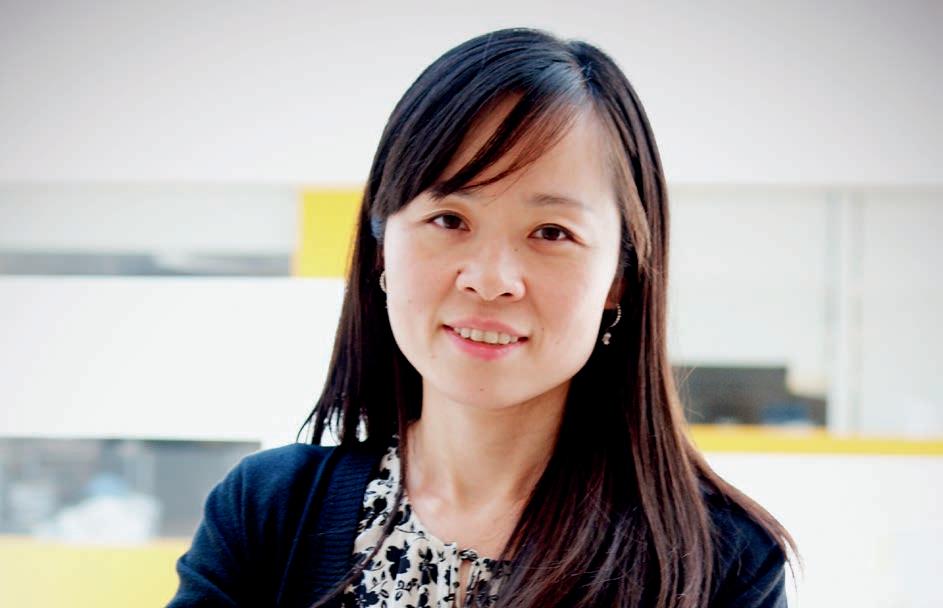
What do you do at LIDS?
I’m an administrative assistant. I support and assist Prof. Sertac Karaman, Prof. Pablo Parrilo, Prof. Alexandre Megretski, Prinicipal Research Scientist Kalyan Veeramachaneni, and their research groups.
What brought you to MIT and LIDS?
Before I moved to Boston I was in Tennessee. I was getting my degree in political science,
with a focus on Public Administration, at the University of Tennessee. After finishing my degree, I came to Boston to get married and eventually had a data-collecting job at a research institute. But I was really looking for more experience with administration. Finding this position at LIDS was the perfect fit—letting me get practical skills to combine with my theoretical study.
What is your favorite thing so far about LIDS or MIT?
I have many favorite things! The people at LIDS are great. They are very friendly. When I first started, this past winter, everyone was so helpful and welcoming. I also find the people at LIDS are very humble—extraordinarily intelligent but still very humble. I enjoy seeing professors and students at the white board discussing a problem together. They just love their research. It’s great to see such great people working together.
And I love that it is so international here. There are people from everywhere and from many different backgrounds. If I had the ability I would introduce more Chinese kids to MIT to see how great this place is, and if the students here want to visit China I would encourage them to do so.
It also seems like my life is never away from a campus. I was born into a teacher’s family. Our home was right next to the school where my father taught. For my first job back in China, after my degree was achieved, I stayed at the same university and had a teaching job. This means I grew up on a campus, studied on a campus, and have worked on campuses throughout my life. I feel so at home in this setting, so I enjoy the MIT and LIDS environment very much.
What hobbies or interests do you explore when you’re not in the office?
I love swimming and hiking. There is a gym with a pool close to the train station. I tried going in the mornings—taking a swim, showering, getting dressed, and coming to work. But it was too much! I have to keep it simple in the mornings. I enjoy walking along the sides of Charles River and watching the beautiful views. I also love to learn Latin dancing, though sometimes I feel I’m too slow to remember the steps!
Is
there a fun fact about yourself that you’d like to share?
I know American Sign Language! I have some deaf friends so I became interested in learning it. At first it required so much concentration on each person’s signing that I’d be very tired after just a little while. But later on I found it a beautiful language because it is so expressive. The deaf people I met opened their hearts easily, and love people. I would love to learn different languages, because every language lets us learn about a different culture.
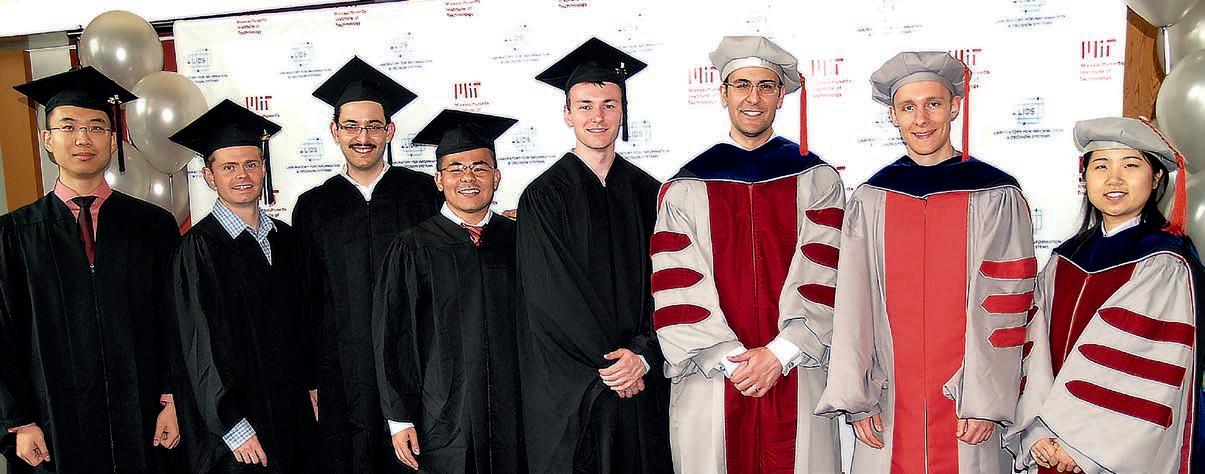
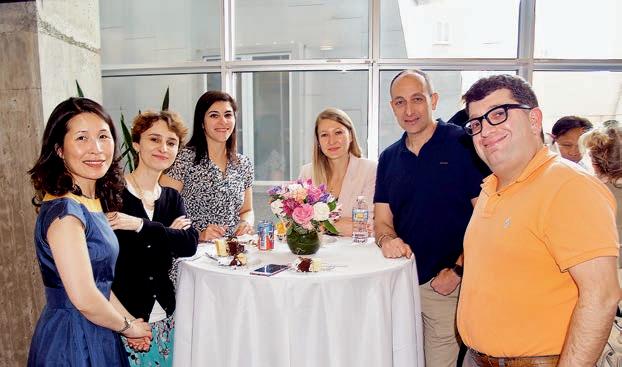
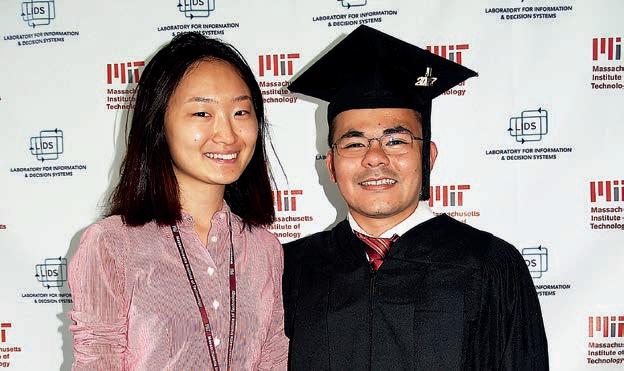
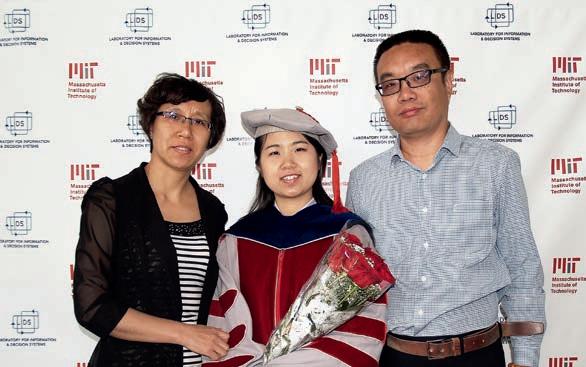
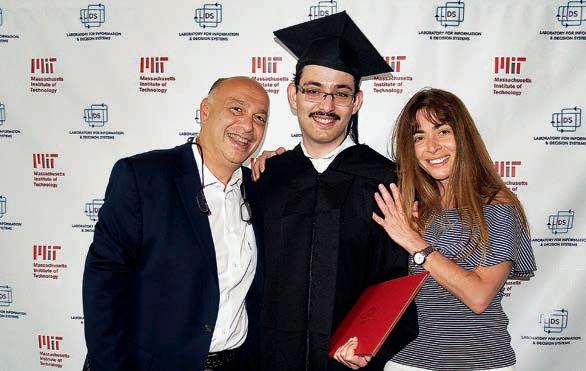
LIDS Commencement Reception
Congratulations to this year’s graduates!
PhDs received by:
Elie Adam
Trevor Campbell
Hamza Fawzi
Arthur Flajolet
Alex Gorodetsky
Swati Gupta
Qingqing Huang
Georgia-Evangelia Katsargyri
Nikita Korolko
Christina Lee
Beipeng Mu
SMs or MEngs received by:
Usman Ayyaz
Zied Ben Chaouch
Aidan Dowdle
Allison Leigh Fero
Matthew Giamou
Bomin Jiang
Jonathan Johannemann
Igor Kadota
Sung Min Park
Adityanarayana Radhakrishnan
Ian Schneider
Christopher Shannon
Bryan Teague
David Wong
Katharine Xiao
Zhi Xu

LIDS
Awards & Honors
Awards
Postdoctoral Fellow Stefania Bartolett i was named a 2016 Paul Baran Young Scholar by The Marconi Society.
Principal Research Scientist Audun Botterud, along with Prof. Asu Ozdaglar, received a 2017 Siebel Energy Institute research grant for the project, “Improved Analytics for Urban Energy Distribution Grids with Smart Buildings.”
Noam Buckman was awarded a 2017 National Defense Science & Engineering Graduate (NDSEG) fellowship.
Zied Ben Chaouch received the MIT EECS Department’s 2017 Frederick C. Hennie II Teaching Award for outstanding teaching.
Wenhan Dai, Zhenyu Liu and Bryan Teague, working with project advisors Prof. Moe Win, Postdoctoral Fellow Stefania Bartoletti, and colleague Prof. Andrea Conti (University of Ferrara), won first prize in the 2016 IEEE Communications Society’s Communication Technology Changing the World Student Competition.
Prof. Ali Jadbabaie was awarded a 2016 Vannevar Bush Faculty Fellowship from the Office of the Secretary of Defense (OSD). The fellowship provides extensive, long-term financial support to distinguished university faculty and staff scientists and engineers to conduct basic research.
Prof. Patrick Jaillet received the 2017 Ruth and Joel Spira Award for Excellence in Teaching from MIT’s EECS Department.
Brian Jones, System Administrator, won a 2017 MIT Excellence Award for Serving the Client— one of the highest honors awarded to MIT staff.
Prof. Sertac Karaman received the 2017 Young Investigator Award from the Office of Naval Research. Prof. Karaman also received the 2017 RAS Early Career Award from the IEEE Robotics & Automation Society for “contributions to motion planning and control algorithms for robots and autonomous vehicles.”
Christina Lee was awarded a 2016 Claude E. Shannon Research Assistantship.
Prof. Eytan Modiano, together with his student Abhishek Sinha and collaborator Prof. Leandros Tassiulas (Yale), received the best paper award at ACM MobiHoc 2016.
Shreya Saxena was named a 2017 Graduate Woman of Excellence by MIT’S Office of the Dean for Graduate Education.
Omer Tanovic was awarded the MIT EECS Department’s 2017 Carlton E. Tucker Teaching Award for outstanding teaching.
Prof. John Tsitsiklis received the (Greek) National HELORS (Hellenic Operational Research Society) Award.
Prof. Caroline Uhler received a 2017 NSF Career Award for her research, “Gaussian Graphical Models: Theory, Computation, and Applications.”
Prof. Uhler was also awarded a 2017 Sloan Research Fellowship.
Prof. Moe Win received the IEEE Communications Society Edwin Howard Armstrong Achievement Award 2016 “for contributions to the foundation of wireless communication and localization networks.” He also received the 2016 Institute of Advanced Studies Natural Sciences and Technology Fellowship from the University of Bologna.
Honors
Prof. Eytan Modiano was named Associate Director of LIDS, beginning July 1, 2017. Prof. Modiano was also appointed Editor in Chief of the IEEE/ACM Transactions on Networking, starting July 1, 2017. This is the premier journal in the networking field.
Prof. Asu Ozdaglar was appointed an Associate Department Head of MIT’s EECS Department, beginning in January 2017.
Prof. Devavrat Shah became the inaugural Director of the Statistics and Data Science Center, a unit within MIT’s Institute for Data, Systems and Society (IDSS), effective July 1, 2016.
Prof. John Tsitsiklis was appointed Director of LIDS and Associate Director of MIT’s Institute for Data, Systems, and Society (IDSS), beginning April 2017.
Principal Research Scientist Kalyan Veeramachaneni was named one of the 100 most creative people in business 2017 by Fast Company.
LIDS Seminars 2016-2017
Weekly seminars are a highlight of the LIDS experience. Each talk, which features a visiting or internal invited speaker, provides the LIDS community an unparalleled opportunity to meet with and learn from scholars at the forefront of their fields.
Listed in order of appearance.
Suvrit Sra
MIT
Laboratory for Information and Decision Systems
Steve Wright
University of Wisconsin-Madison
Computer Sciences Department
Frank Kschischang
University of Toronto
Department of Electrical and Computer Engineering
Jeffrey Bilmes
University of Washington
Department of Electrical Engineering
Bruce Hajek
University of Illinois, Urbana-Champaign
Department of Electrical and Computer Engineering
Negar Kiyavash
University of Illinois, Urbana-Champaign
Department of Electrical and Computer Engineering
Department of Industrial and Enterprise Systems Engineering
Patrick Rebeschini
Yale University
Computer Science Department
Rebecca Willett
University of Wisconsin-Madison
Electrical and Computer Engineering Department
Daniel Russo
Northwestern University
Kellogg School of Management
John Birge
University of Chicago
Booth School of Business
Duncan Callaway
University of California, Berkeley
Electrical Engineering and Computer Science
Energy and Resources Group
Anders Rantzer
Lund University
Department of Automatic Control
Henry Pfister
Duke University
Electrical and Computer Engineering Department
Nikolai Matni
California Institute of Technology
Department of Computing + Mathematical Sciences
Pramod Viswanath
University of Illinois, Urbana-Champaign
Department of Electrical and Computer Engineering
Ram Rajagopal
Stanford University
Civil and Environmental Engineering Department
Stanford Sustainable Systems Lab
Andrea Montanari
Stanford University
Electrical Engineering Department
Statistics Department
Maxim Raginsky
University of Illinois, Urbana-Champaign
Department of Electrical and Computer Engineering
Dimitri Bertsekas
MIT
Laboratory for Information and Decision Systems
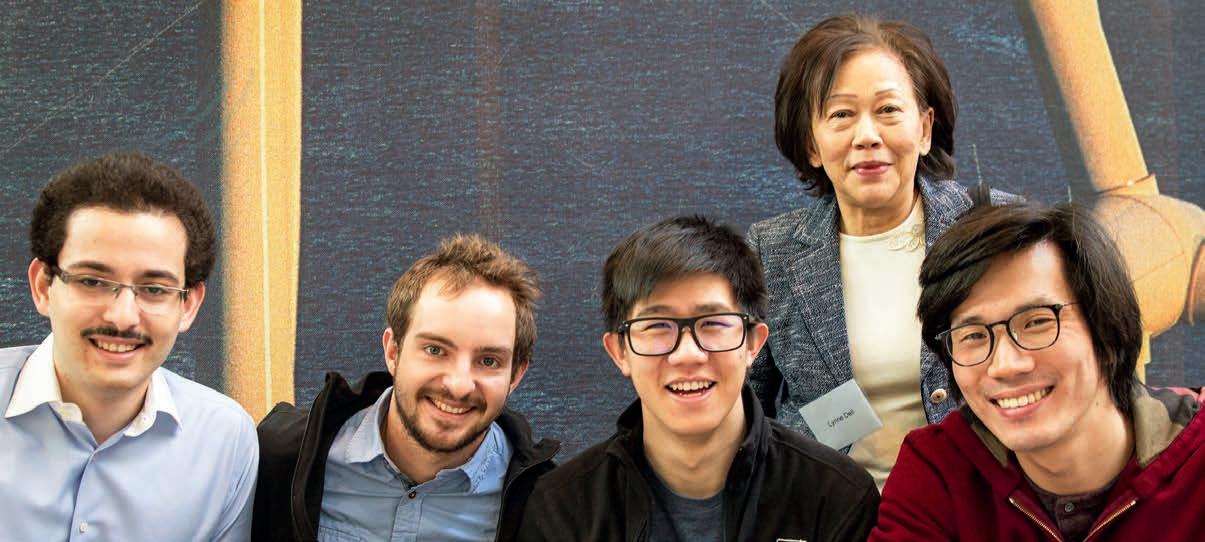
2017 LIDS Student Conference
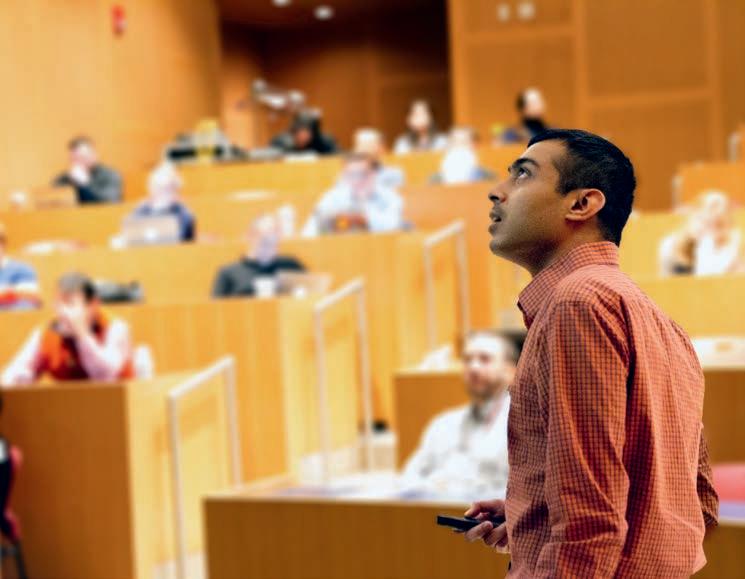
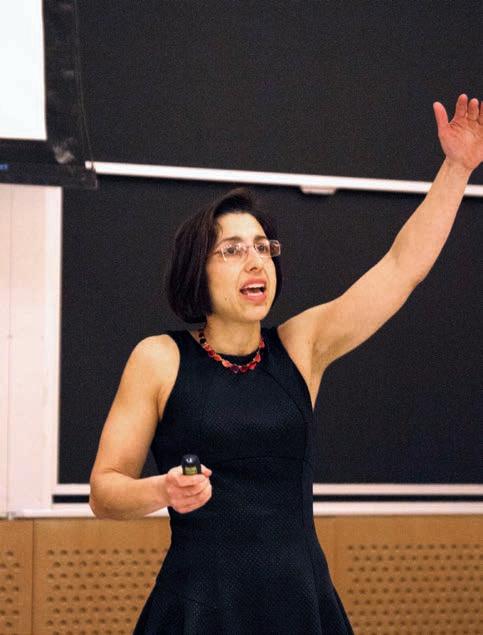
The annual LIDS student conference is a studentorganized, student-run event that provides an opportunity for graduate students to present their research to peers and the community at large. The conference also features a set of distinguished plenary speakers. The 2017 Student Conference marks 22 years of this signature Lab event.
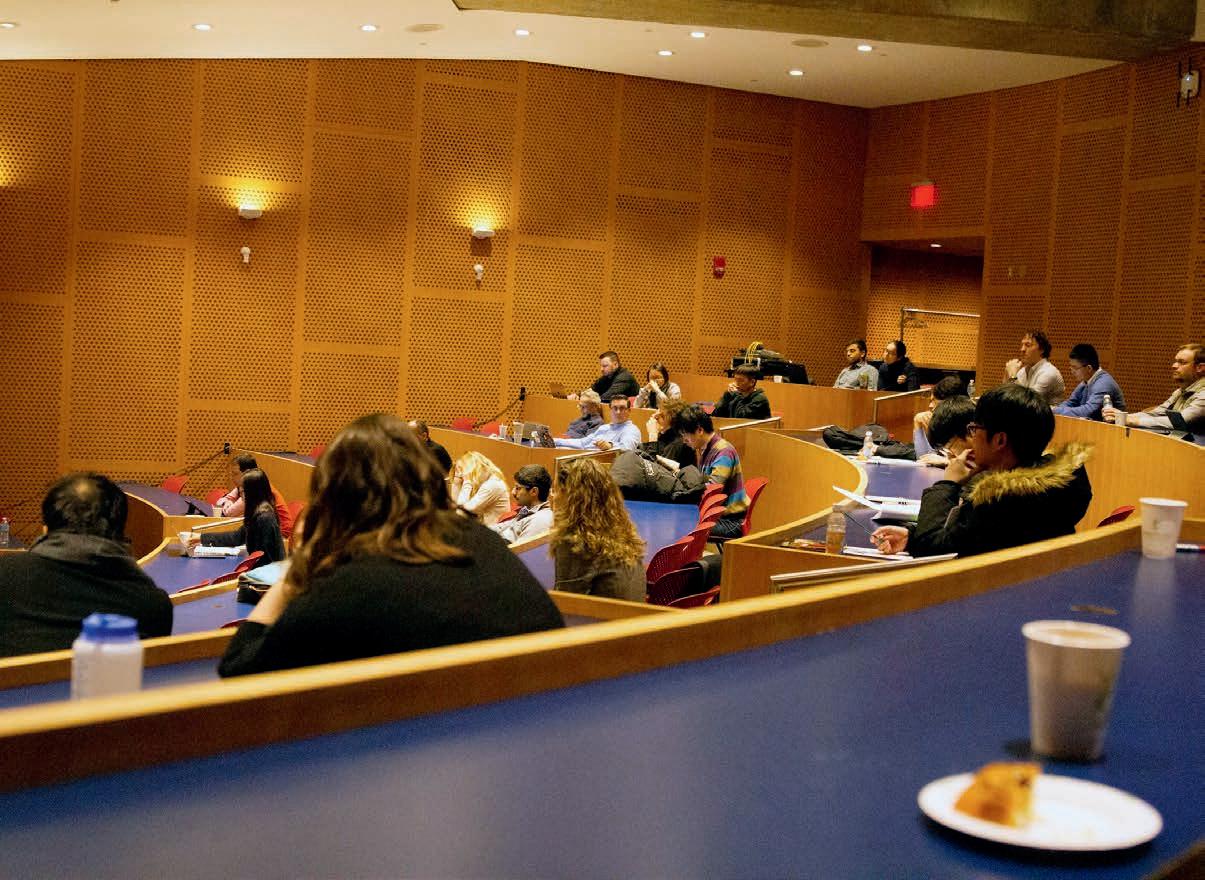
ORGANIZING COMMITTEE
Student Conference Chairs
Zied Ben Chaouch
Dennis Shen
Dogyoon Song
Martin Zubeldia
Committee Members
Allison Fero
Igor Katoda
Christina Lee
Sebastien Martin
Emily Meigs
Flora Meng
Jennifer Tang
Chulhee Yun
SPEAKERS
Student Speakers
Diego Cifuentes
Bennett Cyphers
Arthur Flajolet
Igor Kadota
Nikita Korolko
Christina Lee
Anuran Makur
Amelia Perry
Amin Rahimian
Shreya Saxena
Arsalan Sharifnassab
Abhishek Sinha
Matthew Staib
Denizcan Vanli
Yuhao Wang
Alex Wein
Plenary Speakers
Prof. Ryan Adams (Harvard University)
Prof. David Aldous (University of California, Berkeley)
Prof. Maryam Fazel (University of Washington)
Prof. Mor Harchol-Balter (Carnegie Mellon University)
PANELISTS
Prof. Andrew Lo (MIT)
Prof. Sanjoy Mitter (MIT)
Prof. Yury Polyanskiy (MIT)
Dr. Keith Santarelli (Agero, Inc.)
Prof. Devavrat Shah (MIT)
New LIDS Faculty
Professor Ali Jadbabaie
We are pleased to welcome Professors Ali Jadbabaie and Philippe Rigollet to LIDS!
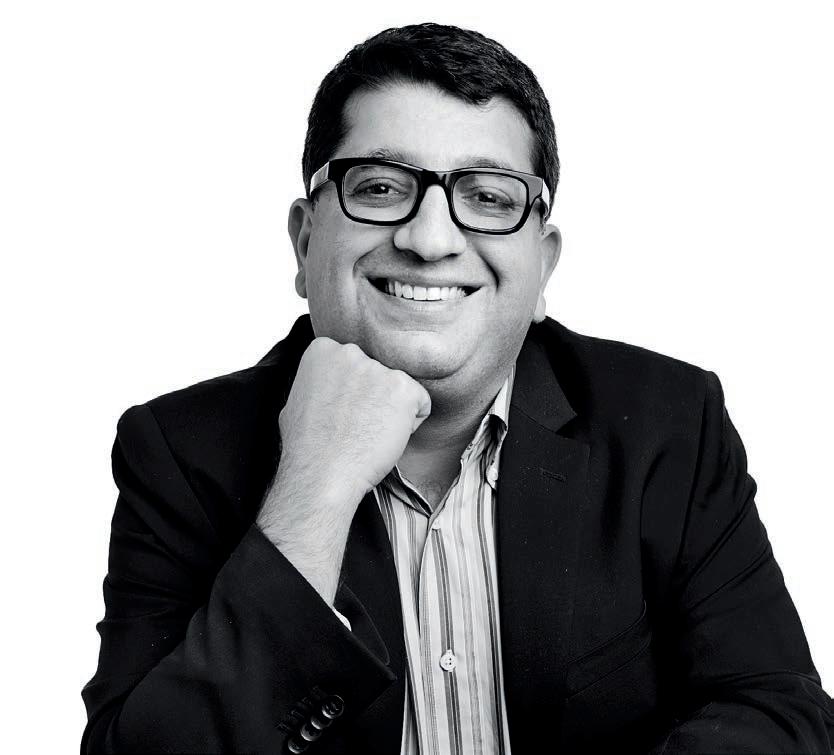
Ali is the JR East Professor of Engineering in the department of Civil and Environmental Engineering, the Associate Director of the Institute for Data, Systems, and Society, and the Director of the Sociotechnical Systems Research Center at MIT. Ali joined MIT in 2016 from the University of Pennsylvania where he was the Alfred Fitler Moore Professor of Network Science in the Department of Electrical and Systems Engineering. His current research interests include the interplay of dynamic systems and networks with specific emphasis on multi-agent coordination and control, distributed optimization, network science, and network economics.
Philippe works at the intersection of statistics, machine learning, and optimization, focusing primarily on the design and analysis of statistical methods for high-dimensional problems. His recent research focuses on the statistical limitations of learning under various constraints. At the University of Paris VI, Philippe earned a BS in statistics in 2001, a BS in applied mathematics in 2002, and a PhD in mathematical statistics in 2006 under the supervision of Alexandre Tsybakov. He has held positions as a visiting assistant professor at the Georgia Institute of Technology and then as an assistant professor at Princeton University. He joined MIT in 2015 and is currently an Associate Professor in the Mathematics Department.
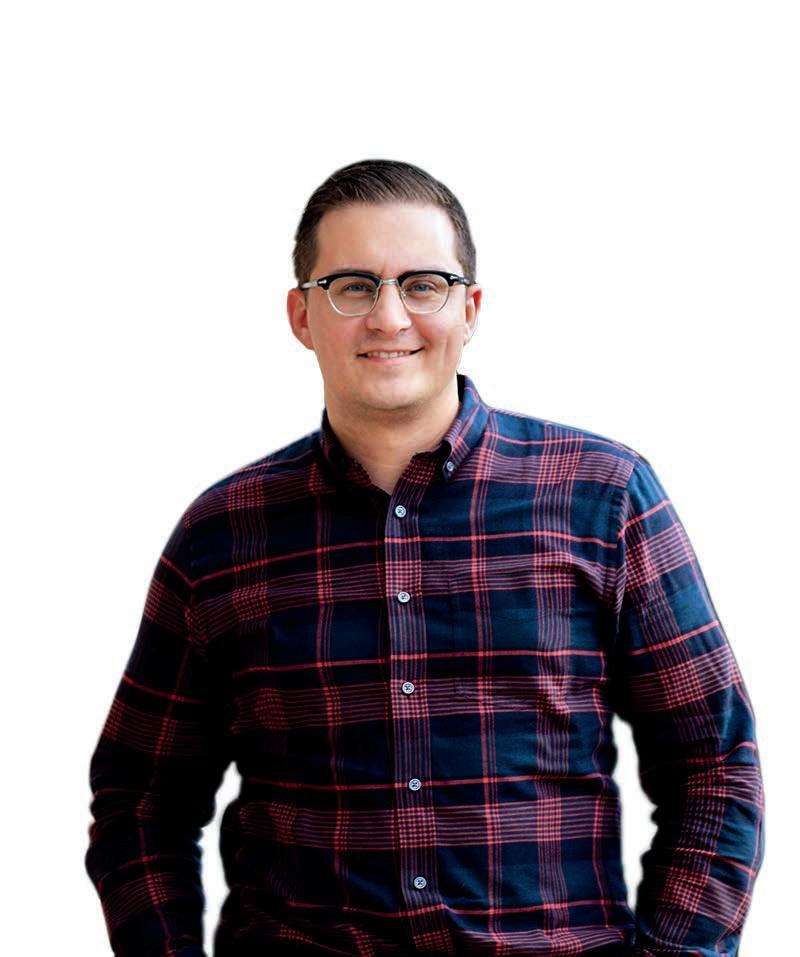
Professor Philippe Rigollet
